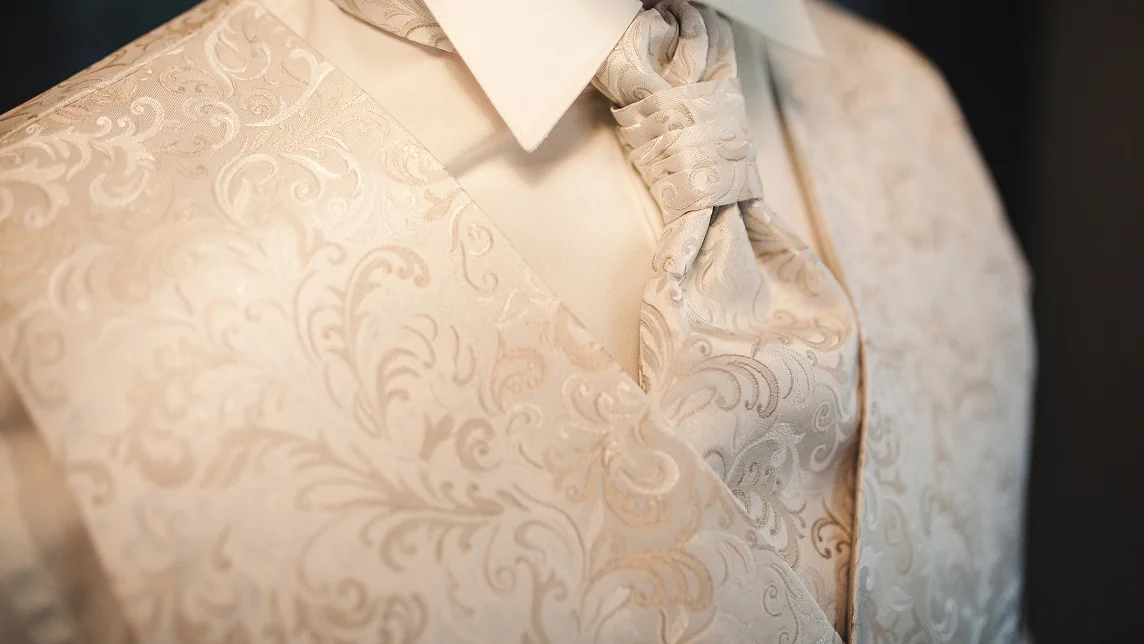The beauty of heritage textiles lies not only in their aesthetic charm, but in their role as silent storytellers of culture, class, and craft. Each motif is a fragment of history—woven, printed, or embroidered with meaning.

Patterns have always carried more than visual weight. They function as historical documents, revealing the values and social hierarchies of their time. A Rococo damask speaks to aristocratic tastes and courtly decorum; a chintz floral reveals centuries of colonial trade routes and cultural exchange. Lace, too, signaled gendered expectations—femininity, purity, wealth—and access to artisanal labor.
Over time, as societies shifted, so did their aesthetic sensibilities. Victorian restraint gave way to Art Nouveau fluidity; postwar minimalism paved the way for nostalgic revivals. By studying these shifts in textile design, we can trace broader movements in economics, politics, gender roles, and domestic life. In short: what we wore, and what we lived with, tells us who we were.

Today, digital designers carry this lineage forward but with new tools and new responsibilities. Museums, libraries, and personal archives are increasingly integrated into design workflows. A single swatch of antique Toile or a scan of 19th-century wallpaper can serve as the launch point for an entirely new collection.
Thanks to digital platforms, designers can digitize, license, and reinterpret historic prints with care and integrity. Software enables us to recolor, resize, and layer these classic motifs, making them viable for contemporary use—without erasing their origins. This blending of old and new is what keeps the textile tradition not only alive, but evolving.
Beyond inspiration, historic textile design offers a powerful framework for sustainable thinking. In a culture of disposable fashion and trend-chasing, heritage prints introduce the idea of timelessness. When a garment or product carries emotional and historical depth, it’s more likely to be valued, repaired, or passed on.
Story-rich patterns don’t just adorn—they endure. They connect the maker, the wearer, and the era through shared meaning. By embracing these motifs, designers aren’t just producing fabric—they’re creating heirlooms with purpose. And in doing so, they remind us that sustainability isn’t always about new materials or manufacturing processes—it’s also about designing with memory, narrative, and longevity in mind.
Looking to the past doesn’t mean repeating it. For today’s textile designers, historic motifs are not limitations—they’re launchpads. With powerful digital tools and boundless creative freedom, the romantic legacy of English and French textiles is being reinvented for a modern world.
Textile Technology’s like Texcelle and Jacquard allow designers to recreate the complexity of rococo repeats, and brocade structures—not in months, but in minutes. These tools offer precision over every line, color, and thread simulation, making it possible to emulate centuries-old craftsmanship with digital accuracy.
The beauty of historic design lies in its adaptability. What if Toile de Jouy featured skateboarders instead of shepherds? What if damask shimmered in holographic silver, or was layered over denim?
Prompts like “What would Toile de Jouy look like in neon?” or “Can damask be punk?” are no longer theoretical—they’re entirely achievable. These creative explorations encourage designers to see tradition as a starting point, not a constraint. The key is to take risks while honoring the roots of the pattern language.
As sustainability, storytelling, and emotional resonance become more important in design, heritage patterns offer a path forward. When combined with modern tools, they allow us to preserve beauty, embrace complexity, and communicate meaning in fresh and relevant ways.
The future of textile design doesn’t belong to one era—it belongs to the ongoing dialogue between them. And in that dialogue, the romance, richness, and relevance of English and French textiles will continue to inspire.

In this four-part blog series, we’ve traced the evolution of iconic motifs like Toile de Jouy, chintz, lace, damask, and more—exploring how they shaped the worlds of fashion and interiors, how they reflected society’s deepest values, and how they’re being reawakened in the hands of modern designers. These textiles have long served as emotional and artistic anchors—reminding us where we’ve been while inspiring where we can go.
And today, empowered by cutting-edge design software, we no longer have to choose between honoring tradition and embracing innovation. With digital tools, we can revive, reinterpret, and reimagine these historic patterns for contemporary fabrics, products, and experiences. Whether you’re experimenting with a neoclassical repeat or adding a modern twist to a pastoral print, the essence of centuries-old artistry is now yours to explore—digitally, sustainably, and creatively.
We were delighted to share this four-part journey with you, and we hope it leaves you inspired to see heritage patterns not as relics of the past, but as starting points for your next great design.
Your NedGraphics Team